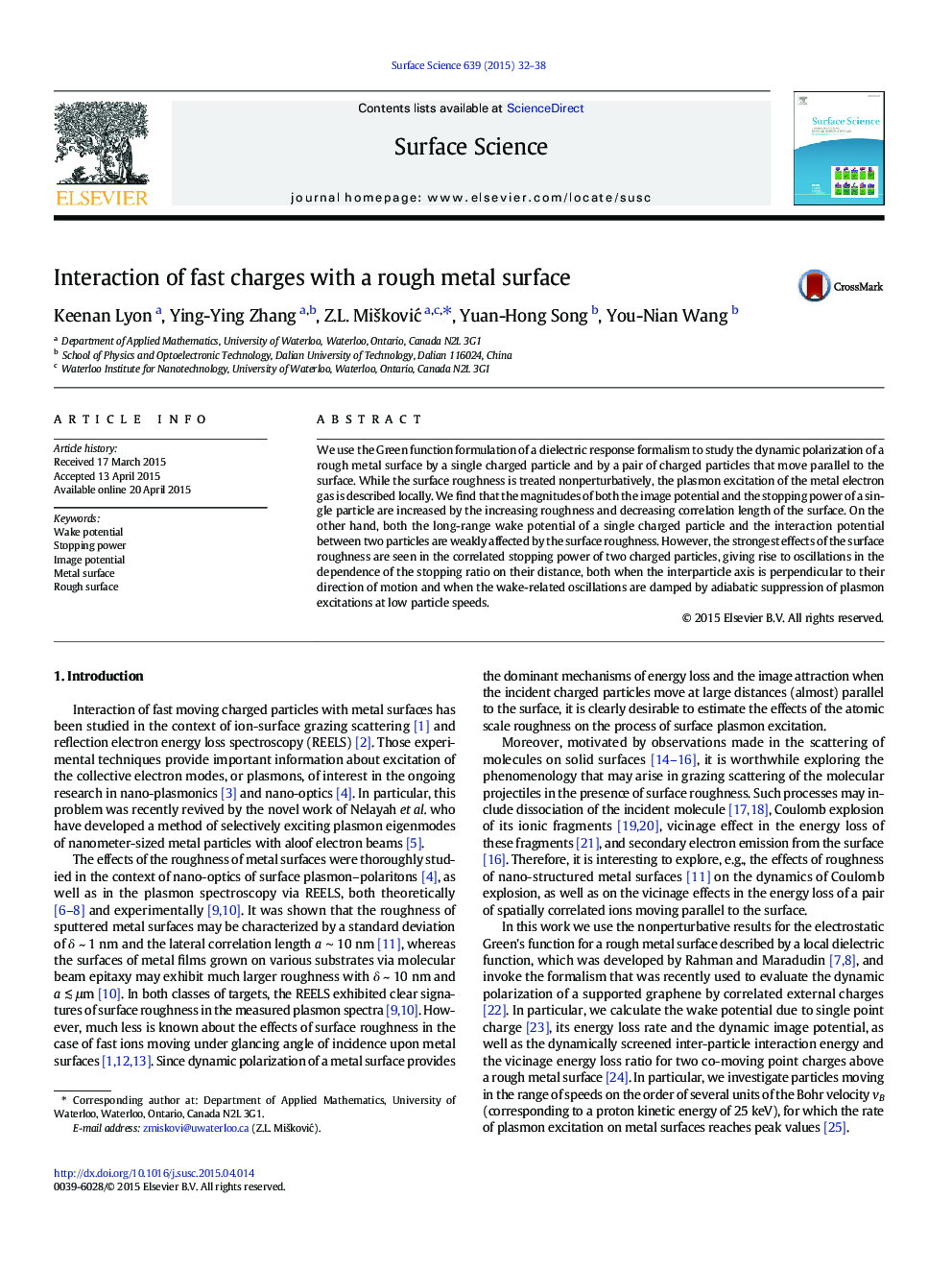| Article ID | Journal | Published Year | Pages | File Type |
|---|---|---|---|---|
| 5421834 | Surface Science | 2015 | 7 Pages |
â¢We model plasmon excitation in a rough metal surface by fast moving point charges.â¢We calculate wake potential, stopping power and image potential for single charges.â¢We calculate interaction potential and stopping ratio for two co-moving charges.â¢Roughness gives rise to oscillation in stopping ratio at low speeds for two charges.â¢Roughness gives rise to oscillation in stopping ratio for perpendicular orientation.
We use the Green function formulation of a dielectric response formalism to study the dynamic polarization of a rough metal surface by a single charged particle and by a pair of charged particles that move parallel to the surface. While the surface roughness is treated nonperturbatively, the plasmon excitation of the metal electron gas is described locally. We find that the magnitudes of both the image potential and the stopping power of a single particle are increased by the increasing roughness and decreasing correlation length of the surface. On the other hand, both the long-range wake potential of a single charged particle and the interaction potential between two particles are weakly affected by the surface roughness. However, the strongest effects of the surface roughness are seen in the correlated stopping power of two charged particles, giving rise to oscillations in the dependence of the stopping ratio on their distance, both when the interparticle axis is perpendicular to their direction of motion and when the wake-related oscillations are damped by adiabatic suppression of plasmon excitations at low particle speeds.
Graphical abstractDownload high-res image (255KB)Download full-size image
